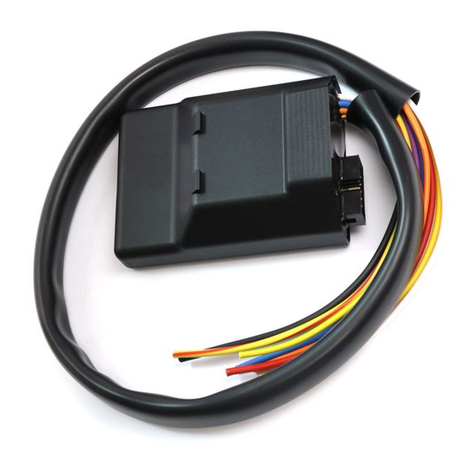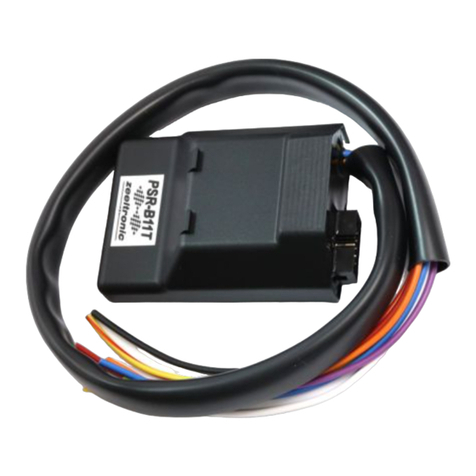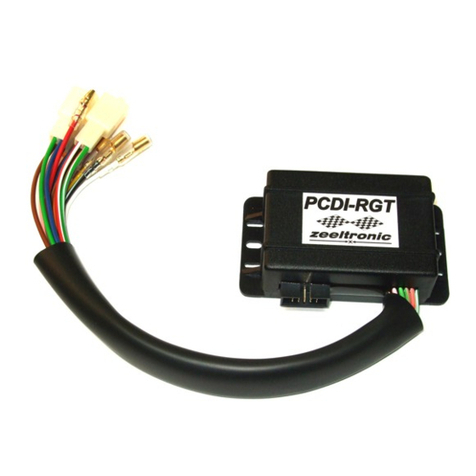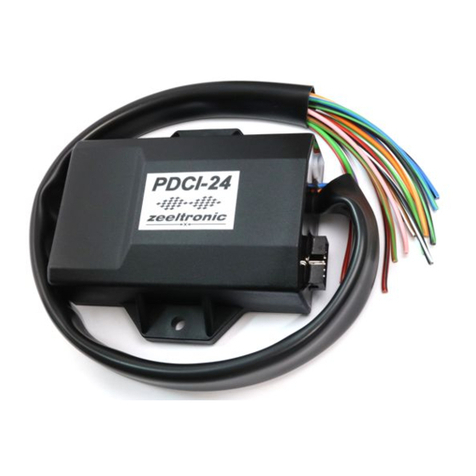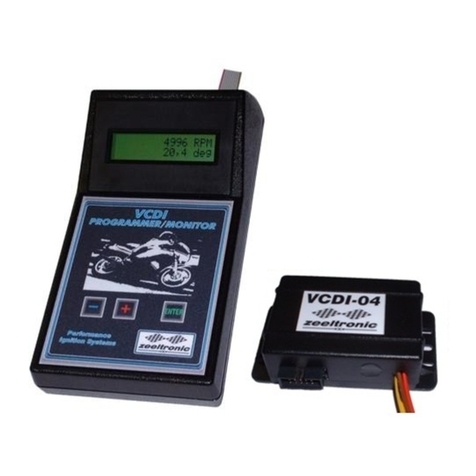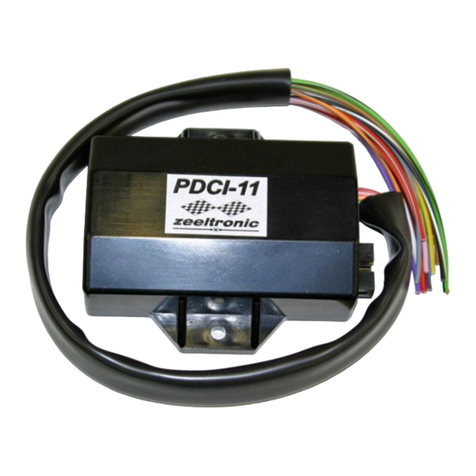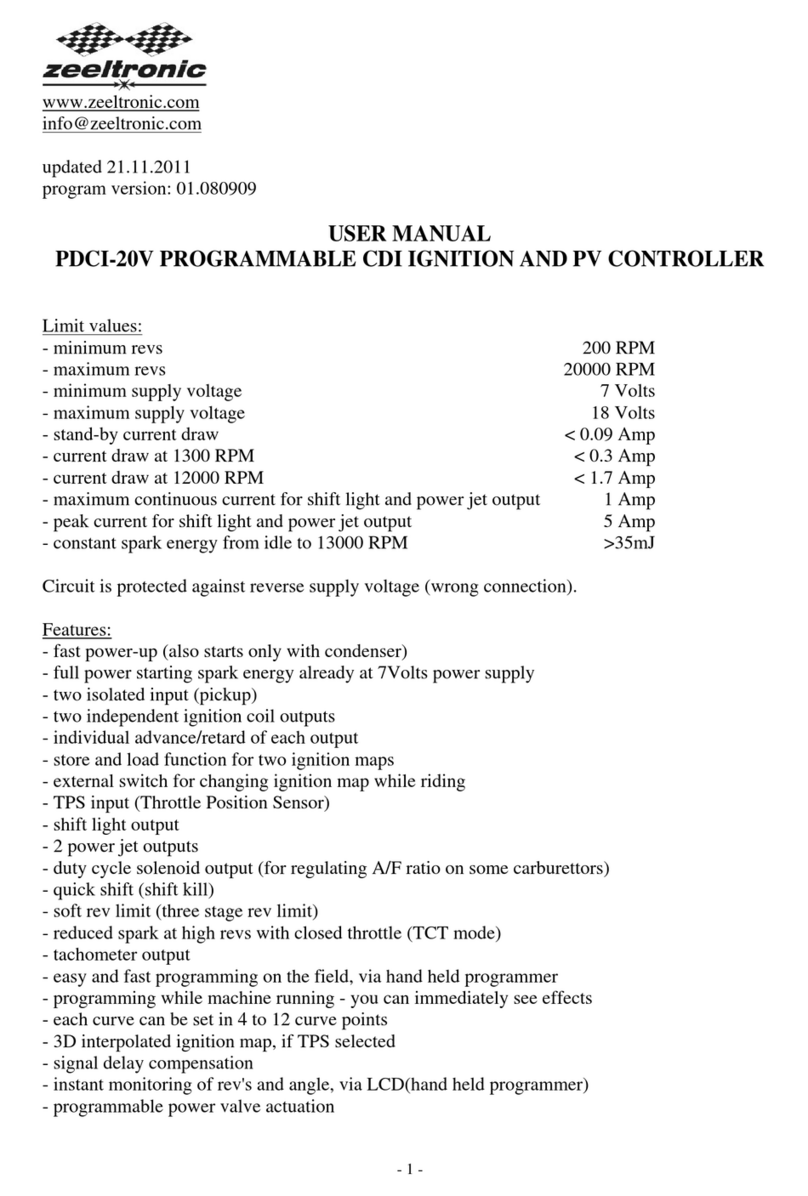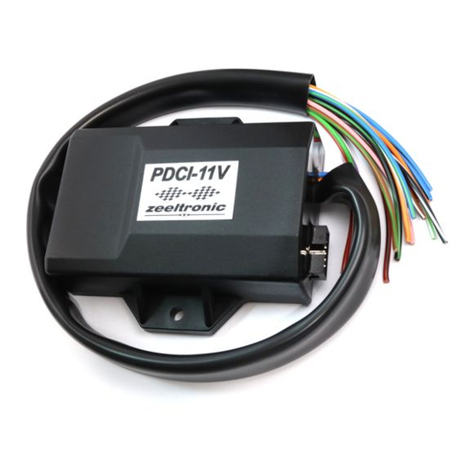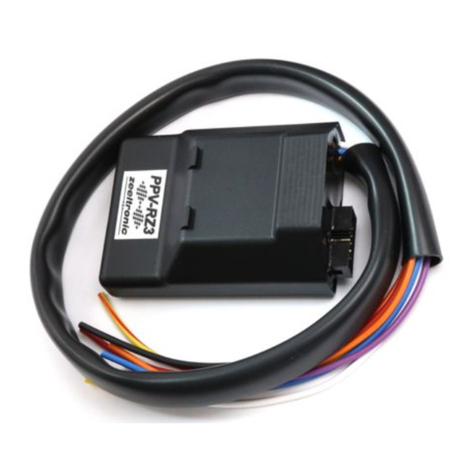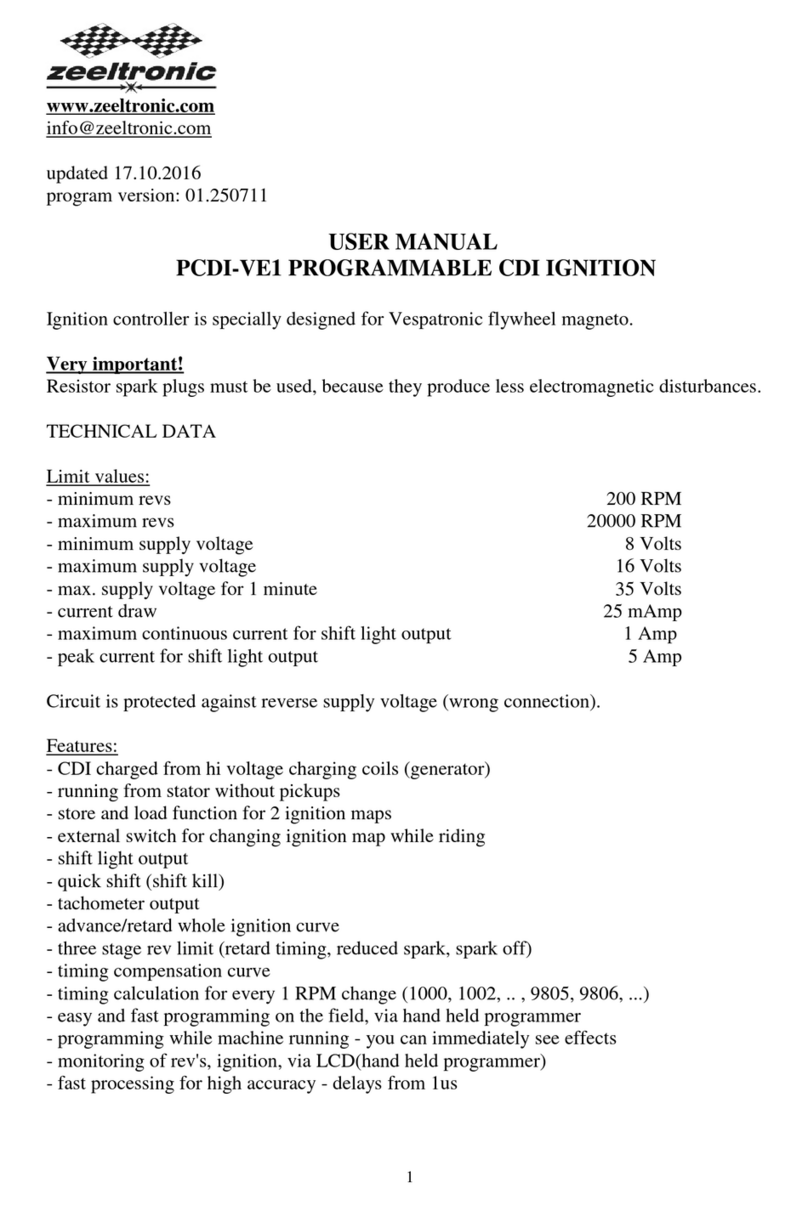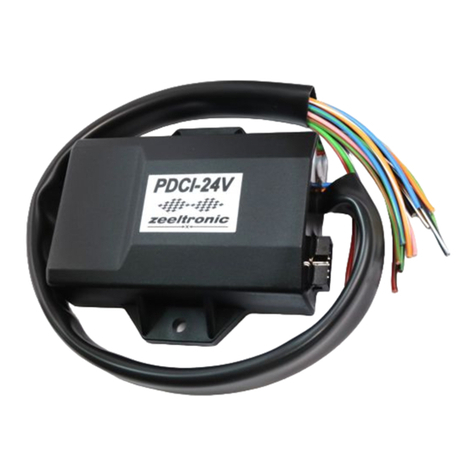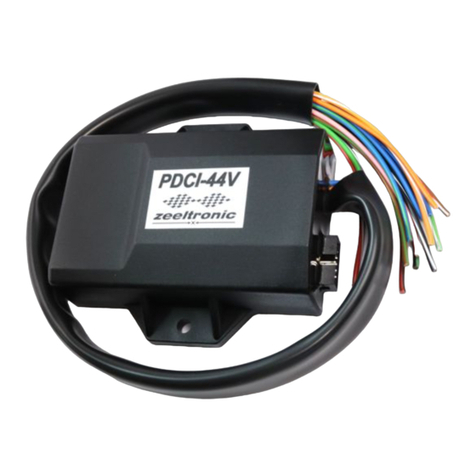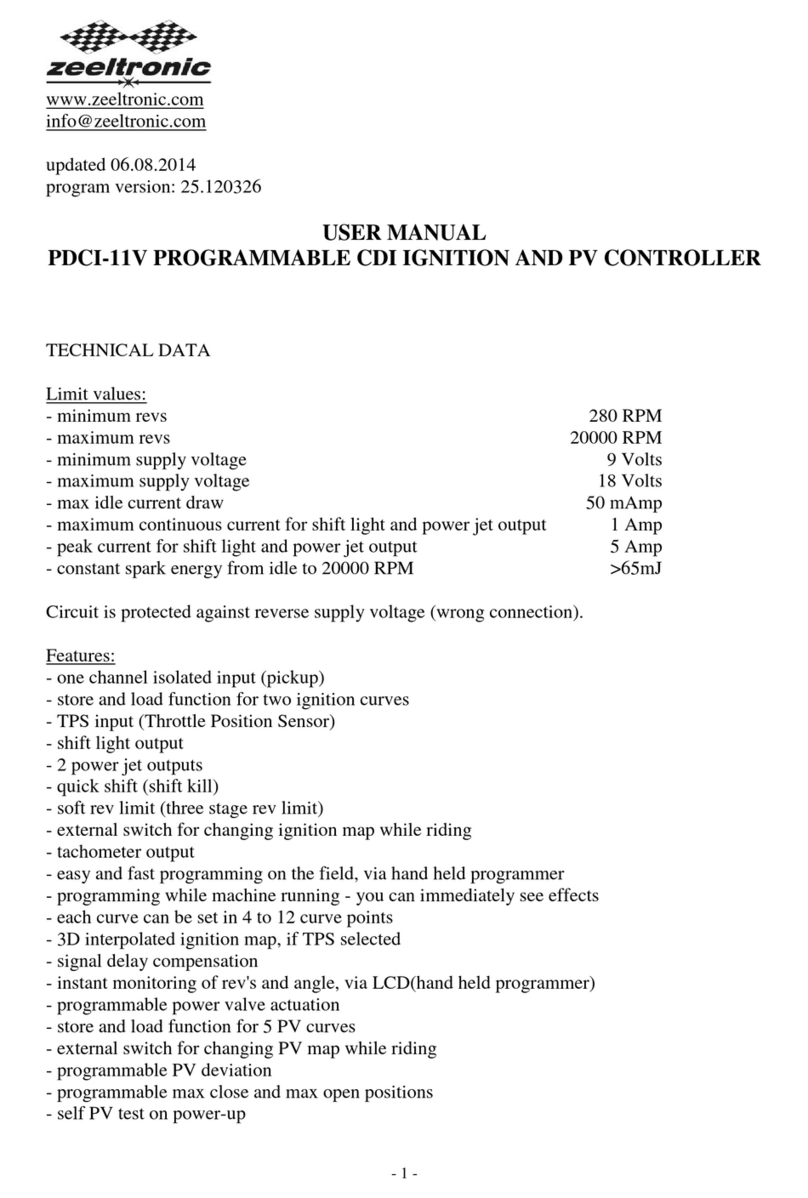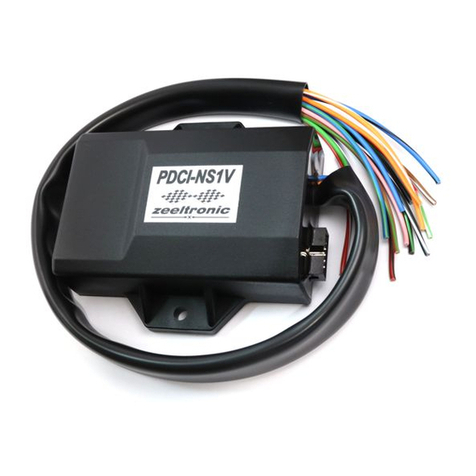
- 3 -
2.2. SET PV PARAMETERS SUBMENU
Load PV Curve - load previously saved curve (from #1 to #5)
Save PV Curve - save new curve (from #1 to #5)
Set PV Curve - valve curve parameters submenu
Deviation +- - deviation of valve position
Close Position - max close valve position
Open Position - max open valve position
PV test - valve position test
Exit
3. LOAD IGN. CURVE
Enter menu and move to Load Ign. Curve with pressing + or - and then press enter .
Now you can select position number of previously saved ignition curve set, with pressing +
or - and then press enter .
4. SAVE IGN. CURVE
Enter menu and move to Save Ign. Curve with pressing + or - and then press enter .
Now you can select position number to which you want to save your ignition curve set, with
pressing + or - and then press enter .
5. Set IGNITION CURVE
Three ignition curves must be programmed for different TPS positions. PCDI does not only
switch between ignition curves, but also calculate timing between programmed curves for all
TPS positions above 33%. From 0% to 33% TPS is used only one ignition curve.
Enter menu and move to Ignition Curve with pressing + or - and then press enter .
Now you are in submenu for selecting ignition curve.
Submenu organisation:
Nr. of Points - number of ignition curve points (from 4 to 10)
Curve 0-33% - ignition curve from 0 to 33% TPS
Curve 66% - ignition curve for 66% TPS
Curve 100% - ignition curve for 100% TPS
Exit - exit submenu
Important!
To avoid wrong processing, don't make unreasonable curve course.
Every time you make any changes to ignition curve, it is automatically saved to #0 position.
Then you can save it to any other position number from #1 to #2.
